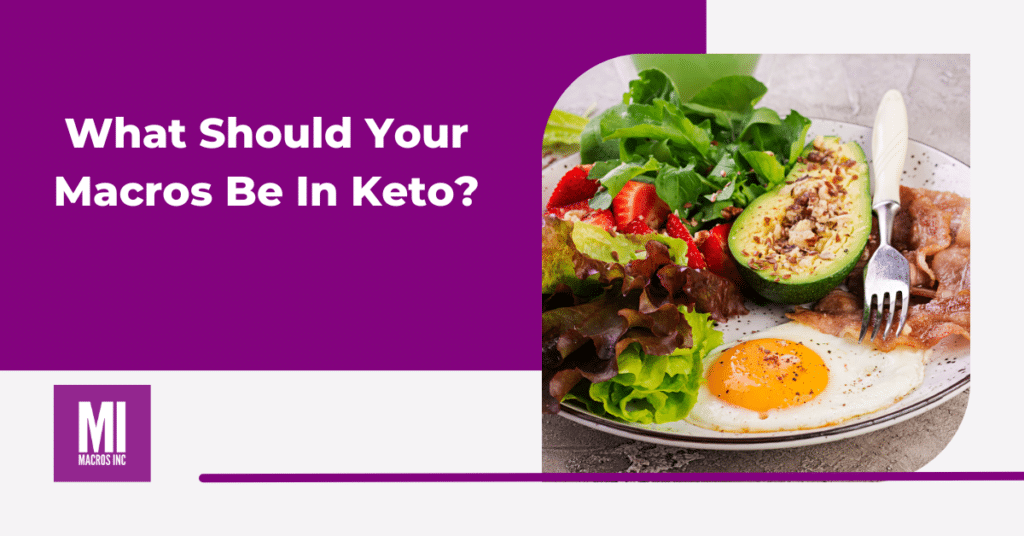The ketogenic diet is a dietary approach that has been a mainstay for quite some time now. It’s quite common to pick up a magazine or read a blog about keto and its purported benefits for fat loss. Most people are at least somewhat familiar with the basics – drop carbs, weight goes down. However, there’s a little more than meets the eye to this approach. Let’s dive in a bit further.
Jump to a Topic
What is Keto?
The ketogenic diet, or “keto” for short, is a form of dieting that restricts carbs while favoring fat and protein. When your body is deprived of carbs, it has to use a different energy source to keep itself going. Therefore, it begins to target fat stores, and make different molecules of energy to sustain itself. These molecules are called ketones, and the overall state is called ketosis.
How Does It Work?
Surprisingly, it isn’t ketosis itself that drives fat loss. As with any other successful diet, the fatloss is driven by a calorie deficit. The reason you are able to lose weight on keto has more to do with what you eat, and what effects it has on you. Since keto mainly focuses on eating protein and fat, it tends to suppress hunger. It even has effects on some of the hormones responsible for hunger signals. If you’re feeling full more often, you’ll likely end up eating less. And if that drop in food creates a calorie deficit, then bingo. You have fat loss.
However, it’s important to remember that the most important aspect of a diet is sustainability. If the eating patterns dictated by the diet are difficult to follow long term, it is unlikely that the approach will be successful, and any lost weight will tend to come back. For some people, lowering their carb intake is feasible for them. Others will struggle to do so. As such, keto isn’t inherently a good or bad diet – it just has to be the right tool for the job.
So that’s keto in a nutshell. It’s rather simple on paper – eat less carbs, eat more protein and fat, and repeat. However, keto can be adapted further depending on your needs. Let’s talk about how.
Ketogenic Diet Macros
There are actually a few different ways you can set up the macros for a ketogenic diet. Which approach is best depends on your individual needs and lifestyle. In general, there are three approaches to keto – the standard ketogenic diet (SKD), targeted ketogenic diet (TKD), and cyclical ketogenic diet (CKD).
Standard Ketogenic Diet (SKD)
The standard ketogenic diet (SKD) is the simplest of the three approaches. Your target macros are constant from day to day, with no fluctuation to worry about. As such, this is usually the recommended starting point for those new to the keto diet.
With regards to macros, the general rule for a SKD is low carb, moderate protein, and high fat. Carbs can range anywhere from zero to 100 grams, protein is usually around 0.8-1.2g per pound of lean body mass, and fats comprise the bulk of the remaining calories.
Targeted Ketogenic Diet (TKD)
A targeted ketogenic diet is a bit more complicated, but isn’t too far off from the standard one. Here, the goal is to better account for any performance based needs, such as cardio, weight training, and other activities. While some folks find no decrease in their ability to work out, it’s also not uncommon for the lack of carbs to sap one’s energy. A TKD tries to remedy this by focusing the carb intake around training.
On training days, the carbs are eaten sometime around the training session, usually within a couple hours of the start. In other words, the macros on training days are no different than a SKD – all that changes is the timing of the carb intake. On rest days, the setup is identical to a SKD.
Cyclical Ketogenic Diet (CKD)
Finally, we have the cyclical ketogenic diet (CKD). This approach is arguably the most complicated, as it involves different macro targets on different days of the week. In particular, you have 1-3 days of higher carb intake, followed by 4-6 days of keto. These higher carb days provide benefits you don’t get with the other two approaches. They refill muscle glycogen, regulate energy levels, and normalize some of the hormones that are altered by dieting.
For the majority of the week, the macros are going to be constant, and similar to what you would expect for a SKD. This is followed by 1-3 days with higher carbohydrate targets, and an increase in calories up to maintenance levels. These refeed days are also usually placed on training days in order to give a boost to workouts, similar to a TKD.

Conclusion
The ketogenic diet has enjoyed a huge boost in popularity over the past few decades. It has become a very popular dietary approach for those looking to lose weight, and has potential for being quite successful at it. As with any other diet, though, it is only effective if it can be continued in a sustainable manner. Ultimately, it’s simply one of many tools you have available for fat loss.
Try our nutrition coaching, for free!
Be the next success story. Over 30,000 have trusted Macros Inc to transform their health.
Simply fill out the form below to start your 14-day risk-free journey. Let's achieve your goals together!

